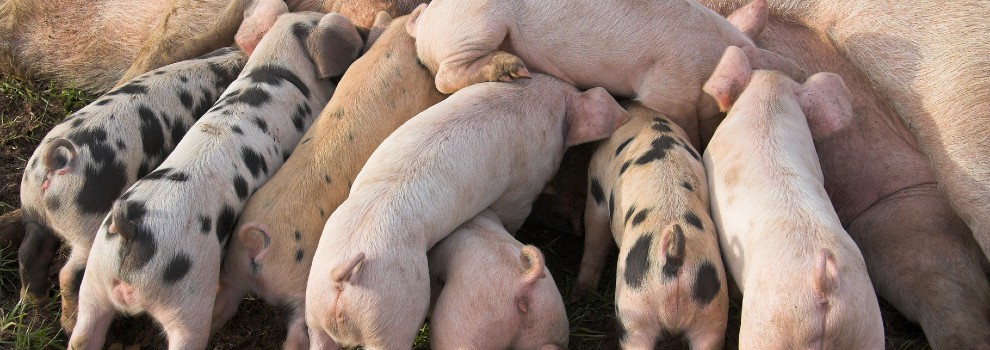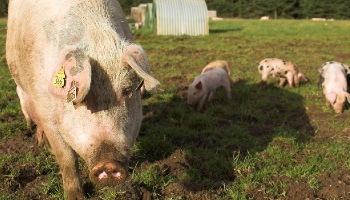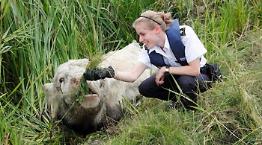- Find a Pet
- Advice and Welfare
- Ways to Give
- Get Involved
- What We Do
- Search
- My RSPCA
- Report a concern
- Sponsor
-
Colour modeVivid Calm
- Home
- Advice and welfare
- Farm animals
- Pigs
- Farming
Farming pigs
Approximately 10 million pigs are slaughtered in the UK each year. There are three main stages in pig production, which are detailed below.

Breeding - pregnant (dry) sows
There are several systems in which pregnant sows can be kept.
Sow stalls
Individual stalls stop sows turning around, allowing only limited movement forwards and backwards. They were banned in the EU in January 2013, although their use is permitted for up to four weeks after mating. They were completely banned in the UK in 1999.
Group housing
Group housing gives sows more freedom to move and socialise. However, aggression can be a problem without suitable management and facilities.
Outdoor systems
Sows are kept in groups outdoors, with large bedded huts for shelter. They have more space and can explore and forage in their environment. Ensuring sow welfare can be a challenge depending on the weather and the type of land.
Breeding - giving birth (farrowing)
Farrowing crate
These prevent the sow from turning around and aim to reduce the risk of the sow crushing her newborn piglets. They have a heated 'creep' area to attract the piglets away from the sow when not suckling. While most sows in the UK farrow in crates, some producers use indoor pen systems that don't confine the sow, although there aren't many using these.
Outdoor systems
Sows are given individual shelters ('arcs') and straw to build a nest. The piglets' movement is restricted for the first one to two weeks by a barrier around the entrance, in order to keep them in the warm arc. Approximately 40% of sows give birth outdoors in the UK.
Sows are put in farrowing housing up to a week before they're expected to give birth, and they remain there until the piglets are weaned at around 28 days.
Growing / finishing
Most pigs, including those born outdoors, are put into indoor accommodation for growing/finishing after weaning. Only 3% of pigs will spend their entire lives outdoors.
Find out about some of the key welfare issues for pigs and how you can help improve pig welfare.



